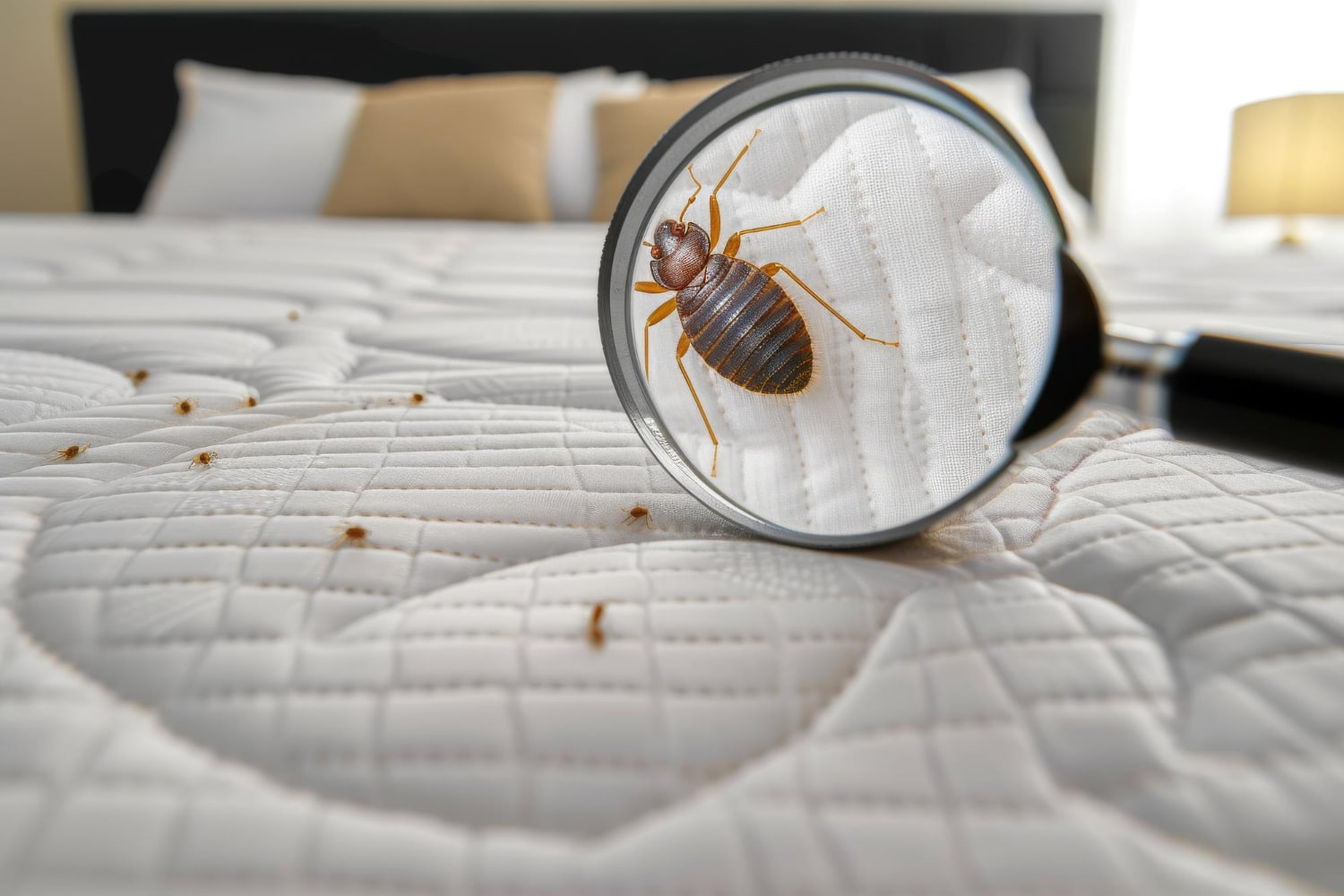Bed bugs can be an unwelcome surprise in any home, especially when you discover their presence in your cosy bedroom. These tiny pests are experts at hiding, making it challenging to spot them until they become a significant problem. Understanding the signs and symptoms of a bed bug infestation is essential for early detection and control.
Keeping bed bugs away from your home requires vigilance. Simple preventive steps, like inspecting second-hand furniture and being cautious during travel, can make a big difference. By familiarising yourself with bed bug behaviour, you can take action before they become a more significant issue.
While DIY methods can help manage minor infestations, sometimes a professional touch is necessary, especially for severe cases. Addressing bed bugs promptly ensures that you enjoy a restful night without the discomfort these pests can cause. Through a combination of informed steps and professional guidance when needed, you can keep your Canberra home free from these persistent invaders.
Identifying Bed Bugs: Signs and Symptoms
Spotting bed bugs early is crucial in managing an infestation. These insects are small, about the size of an apple seed, and have flat, oval bodies. They are brownish-red and can be elusive, often hiding during the day. Look for them in seams of mattresses, box springs, bed frames, and headboards.
Bed bugs can hide in many places, not just your bed. Check luggage, clothing, upholstered furniture, and even electrical outlets. They can squeeze into the smallest cracks, so thorough inspection is key. Finding their tiny eggs or shed skins is a sign you might have an infestation.
Recognising bed bug bites can help in identifying their presence. Bites often appear in rows or clusters on exposed skin during sleep. They’re usually itchy and can look like mosquito bites. Although they don’t spread diseases, the itching can be uncomfortable. Spotting dark or rusty spots of bed bug droppings on mattresses and bedding is another clear sign.
Preventing Bed Bug Infestations
Preventing bed bugs from entering your home involves a few practical steps. Here are some tips to minimise the risk:
1. Be Cautious While Travelling: Inspect hotel rooms for signs of bed bugs. Keep luggage off beds and floors by using luggage racks.
2. Protect Your Sleeping Area: Encasements around mattresses and box springs can prevent bed bugs from hiding. Regularly wash and heat-dry your bedding and blankets.
3. Inspect Second-Hand Furniture: Be vigilant when bringing in used furniture. Examine all seams, cushions, and crevices for signs of bed bugs before introducing items to your home.
By taking these precautions, you can reduce the chances of a bed bug invasion. Consistent vigilance and a habit of inspecting items before they enter your home can protect against these unwelcome guests. Remember, prevention is easier and more effective than dealing with an infestation once it’s established.
DIY Methods to Control Bed Bugs
Taking action against bed bugs yourself can be effective for minor infestations. Here are some home techniques to help manage these pests:
1. Vacuum Regularly: Use a powerful vacuum cleaner on mattresses, bed frames, and carpets. Make sure to dispose of the vacuum bag in a sealed plastic bag.
2. Wash and Dry: Launder bed linens, curtains, and clothes on hot settings. The heat from a dryer can kill bed bugs and their eggs.
3. Use Steam: Steam cleaning infested areas and items can be effective. Bed bugs cannot survive high temperatures.
In addition to these techniques, certain natural deterrents can help. Diatomaceous earth, a natural powder, can be sprinkled around infested areas to dehydrate and kill bed bugs over time. Essential oils like tea tree or lavender might repel them, although these are less effective as a standalone solution.
DIY methods have their limitations. They might not reach all hiding spots or eliminate eggs completely. For severe infestations, a comprehensive approach with professional help might be necessary, as DIY tactics can only tackle smaller problems effectively.
Professional Bed Bug Treatment Options
Sometimes, calling in the experts is the best course of action. Knowing when to seek professional pest control ensures bed bugs are removed efficiently. If your DIY efforts haven’t worked or the infestation seems widespread, professional intervention is needed.
Professionals use a variety of effective treatment methods. Heat treatment is one method that involves raising room temperatures to levels lethal to bed bugs. Professionals might also use insecticides that are not available to the general public, targeting specific areas without harming your living space.
After treatment, long-term prevention is crucial. Professionals often offer advice on how to keep bed bugs from returning. This might include regular inspections, protective covers for mattresses, and steps for maintaining a bed-bug-free home. Following these strategies ensures your home remains free from these troublesome pests.
Conclusion
Dealing with bed bugs can be daunting, but understanding their habits and the available solutions can ease the challenge. Whether you’re taking preventive measures or dealing with an existing problem, staying informed is the key. Simple DIY strategies can help manage minor infestations, while professional treatments offer effective solutions for more extensive issues.
If bed bugs are causing sleepless nights in your home, it’s time to take action. Complete Pest is here to offer expert advice and treatment tailored to your needs. Let us help you restore comfort and peace of mind to your living space. Contact our pest control company today for a thorough, reliable solution to your pest problem.


